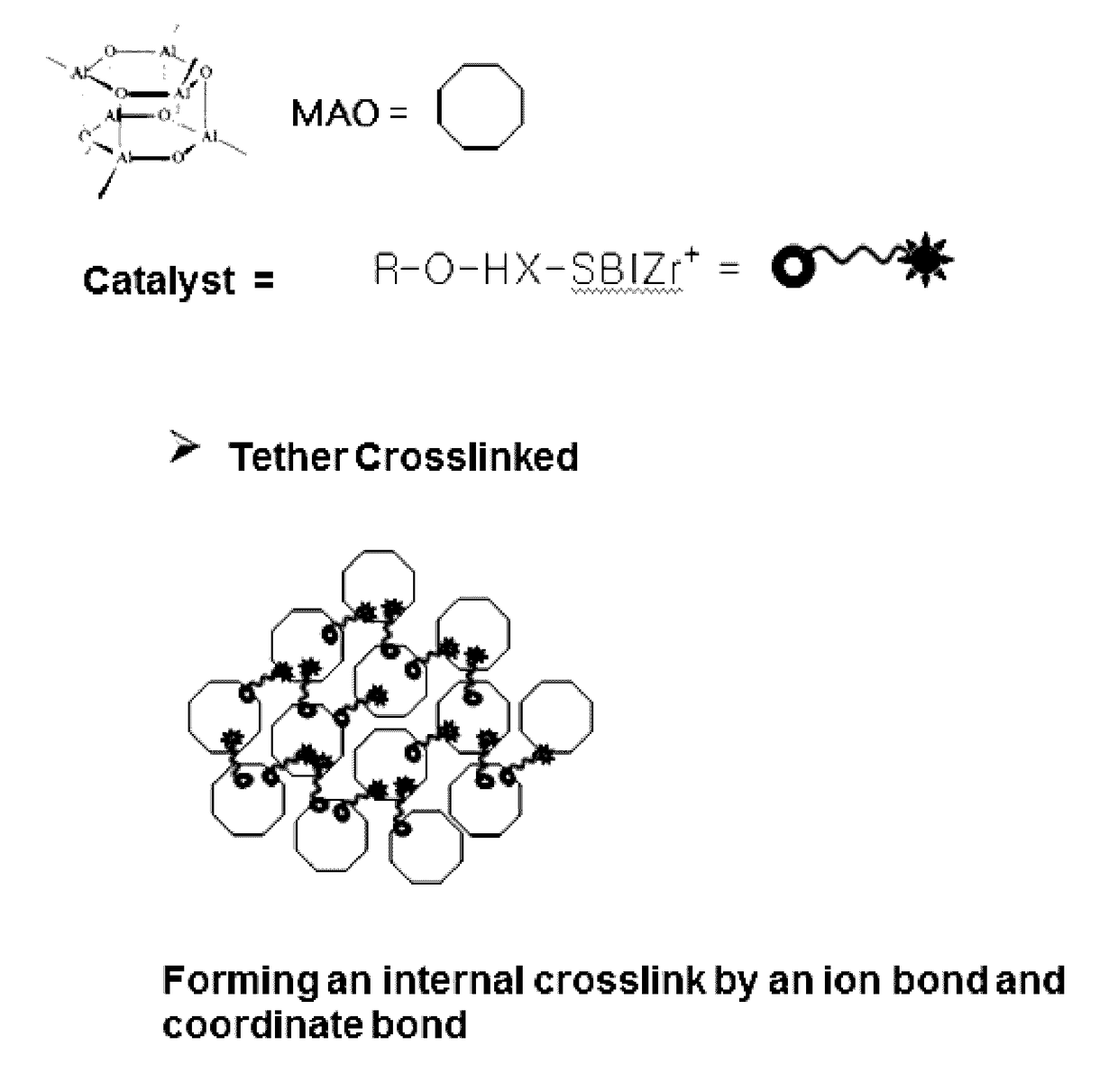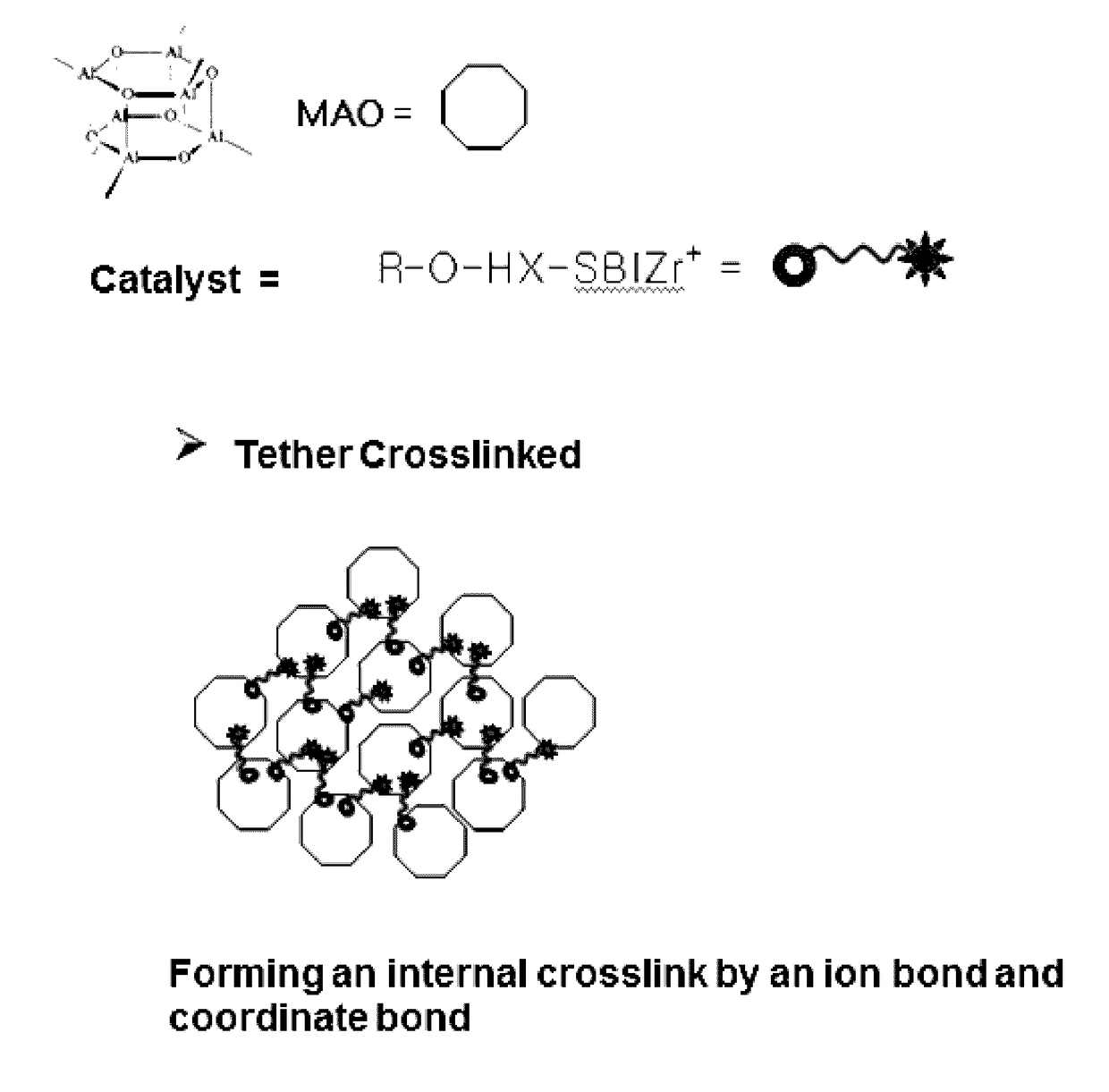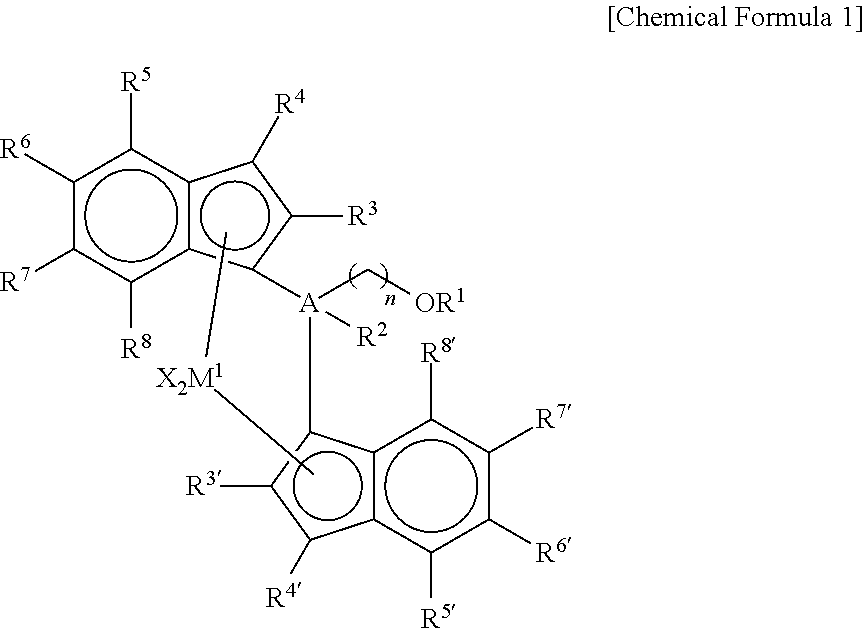Non-supported heterogeneous polyolefin polymerization catalyst composition and method for preparing same
a polyolefin polymerization and catalyst technology, applied in the field of single-site catalyst composition, can solve the problems of adverse effects on the activity of the catalyst, low catalytic activity of the supported catalyst, and high likelihood of losing catalytic active sites, and achieves the effects of easy control of the microstructure of olefin polymers, high catalytic activity, and superior catalyst activity
- Summary
- Abstract
- Description
- Claims
- Application Information
AI Technical Summary
Benefits of technology
Problems solved by technology
Method used
Image
Examples
example 1
[0085]A non-supported heterogeneous polyolefin polymerization catalyst composition was prepared as follows.
Synthesis of Metallocene
Step 1: Synthesis of (6-t-Butoxyhexyl)Dichloromethylsilane
[0086]To 100 mL of a trichloromethylsilane solution (ca. 0.21 mol, hexane) was slowly dropwise added 100 mL of a t-butoxyhexyl magnesium chloride solution (ca. 0.14 mol, ether) at −100° C. for 3 hrs, followed by stirring at room temperature for 3 hr.
[0087]After being withdrawn from the solution mixture, a transplant organic layer thus formed was dried in a vacuum, and the removal of excess trichloromethylsilane afforded (6-t-butoxyhexyl)dichloromethylsilane as a transparent liquid (yield 84%).
[0088]1H NMR (500 MHz, CDCl3, 7.24 ppm): 0.76 (3H, s), 1.11 (2H, t), 1.18 (9H, s), 1.32˜1.55 (8H, m), 3.33 (2H, t)
Step 2: Synthesis of (6-t-butoxyhexyl)(methyl)-bis(2-methyl-4-phenylindenyl)silane
[0089]To 77 mL of a 2-methyl-4-phenylindene toluene / THF=10 / 1 solution (34.9 mmol) was slowly added drops of 15.4 m...
example 2
[0101]A non-supported heterogeneous metallocene catalyst (0.27 g) was prepared into powder particles with an average diameter of 150 μm using no supports in the same manner as in Example 1, with the exception that methylaluminoxane (MAO) was added in a one-shot pattern, instead of in a dropwise mode, to the Schlenk flask containing a solution of the metallocene.
PUM
| Property | Measurement | Unit |
|---|---|---|
| diameter | aaaaa | aaaaa |
| molar ratio | aaaaa | aaaaa |
| molar ratio | aaaaa | aaaaa |
Abstract
Description
Claims
Application Information
 Login to View More
Login to View More - R&D
- Intellectual Property
- Life Sciences
- Materials
- Tech Scout
- Unparalleled Data Quality
- Higher Quality Content
- 60% Fewer Hallucinations
Browse by: Latest US Patents, China's latest patents, Technical Efficacy Thesaurus, Application Domain, Technology Topic, Popular Technical Reports.
© 2025 PatSnap. All rights reserved.Legal|Privacy policy|Modern Slavery Act Transparency Statement|Sitemap|About US| Contact US: help@patsnap.com



